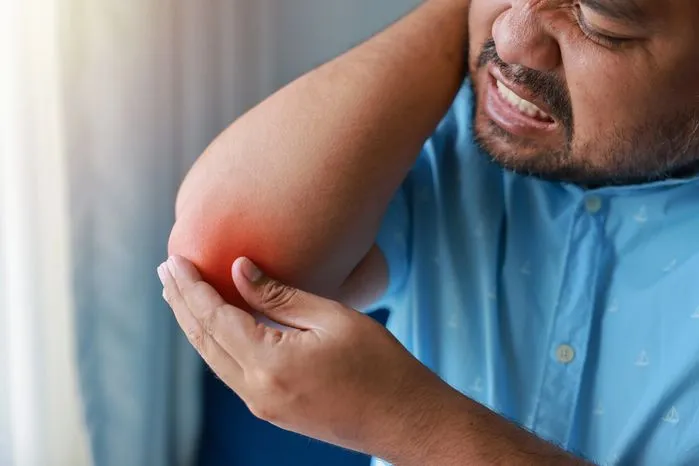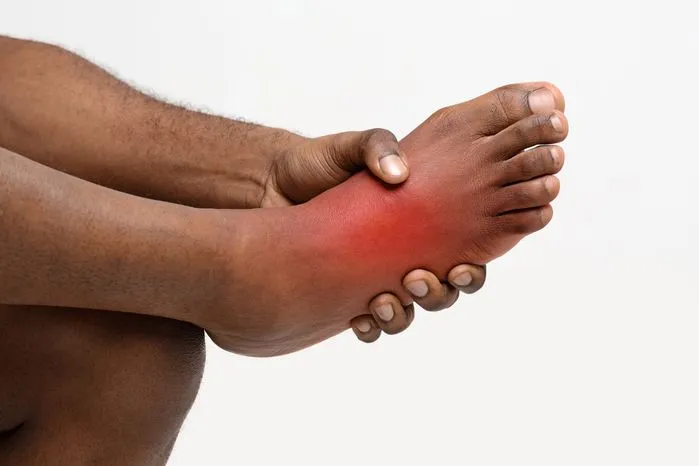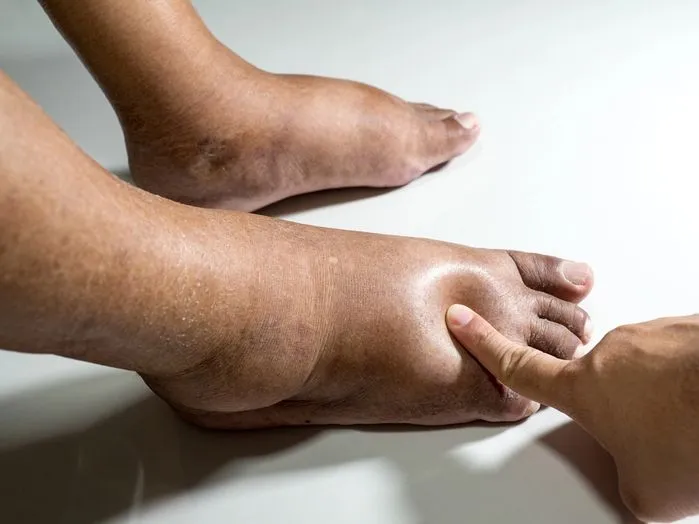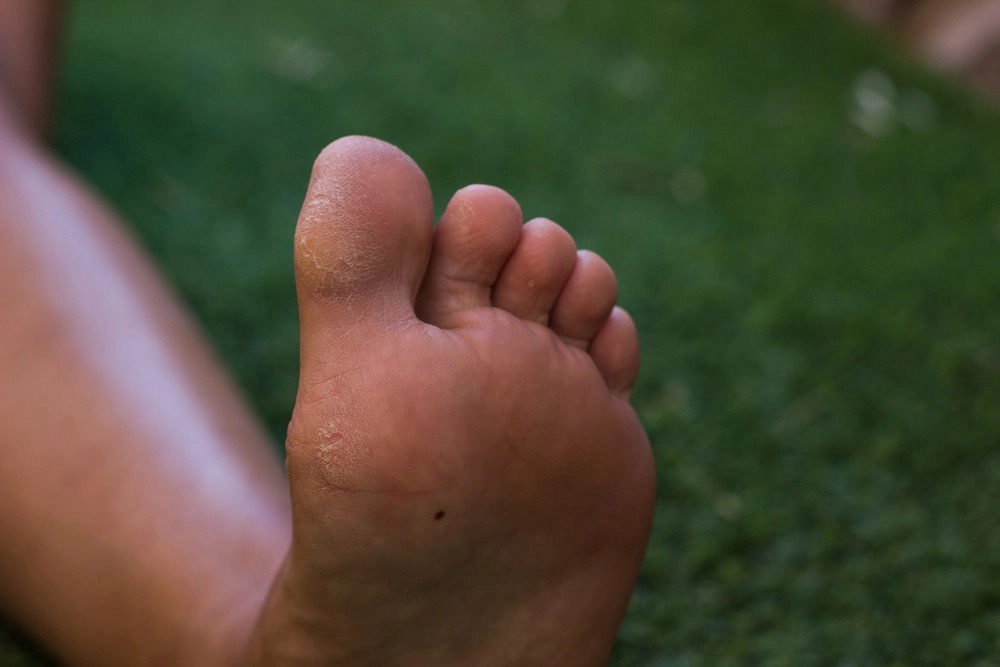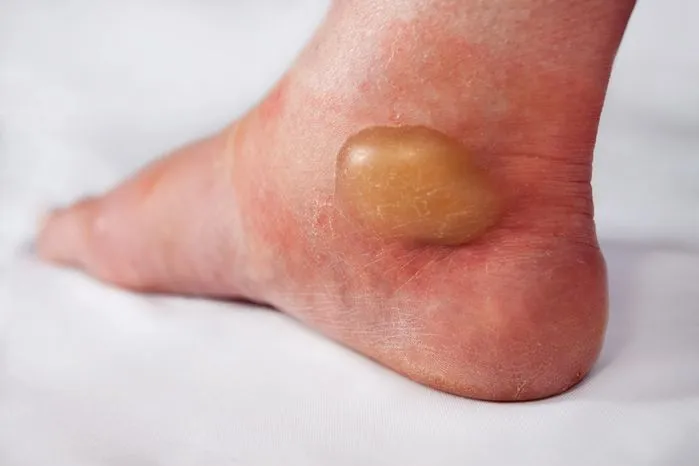
Blisters may seem minor, but at RelefordInstitute.com, we've seen how ignoring them can sideline even the most active patients.
From marathon runners to patients managing diabetic foot care, our team at RelefordInstitute.com has treated thousands of foot blisters across all stages and severities. Based on decades of clinical experience, we’ve developed a practical, evidence-based approach to blister care that goes far beyond generic internet advice.
Top 5 Takeaways
- Blisters are warning signs.
- Caused by friction, moisture, or underlying issues.
- Common in ill-fitting shoes or with poor foot hygiene.
- Don’t pop—treat gently.
- Use aloe vera, green tea, or saline soaks.
- Know when to seek help.
- Large, painful, or infected ones need care.
- There is an array of options for resolving such concerns.
- Prevention is key.
- It is more costly to solve this problem than to prevent its occurrence.
- Pay attention to recurring issues.
- Persistent conditions may signal deeper problems.
- Early action = faster healing and long-term foot health.
Understanding Foot Blisters
Fluid pockets, known as foot blisters, form in the upper skin layers due to friction, burning, freezing, chemical exposure, or infection. It can lead to discomfort and limit mobility, hence knowledge about their types is key for effective treatment.
Foot areas repeatedly rubbing against shoes often develop friction blisters, the most prevalent type. Extreme temperatures or chemicals can trigger thermal blisters, while infections result in infectious blisters, each necessitating a specific treatment approach.
To prevent its development, pay attention to these pieces of advice: wear well-fitting shoes, wear moisture-absorbent socks, or put a cushioning pad over potentially vulnerable spots. They can be avoided by minimizing exposure to excessive hot temperatures, and after exposure to chemicals, decontamination is necessary.
Causes of Foot and Toe Blisters
Friction, mostly due to improper footwear, ranks as a primary cause. Misfit shoes generate repetitive rubbing against the skin, leading to skin layers separating and the formation of a fluid-filled sac.
Dry feet and friction-reducing products can effectively avoid its formation.
To summarize, common sources of foot and toe blisters are:
- Misfit shoes: Tight or loose footwear increases friction, triggering blisters.
- Ignoring friction prevention: Failure in friction reduction measures, like using powders or creams, can result in blister emergence.
- Excess moisture: Sweaty feet raise friction, making blisters more probable.
Safe Home Remedies To Try
These pose a challenging task, particularly when they trigger discomfort or pain. Numerous safe home remedies exist, offering relief and promoting healing.
Natural remedies offer an excellent starting point. Known for its soothing and healing properties, Aloe Vera can be applied directly to it. Its cooling effect reduces inflammation, while simultaneously alleviating pain. Green tea, possessing anti-inflammatory properties, serves as another remedy. Soak cloth in cool green tea, then apply this to your sore for relief.
Effective DIY solutions also exist. Saline solution, made at home, can cleanse it, preventing infection. Combine one teaspoon of salt with warm water in a cup, soak cloth in this solution, and apply to your blister.
Never attempt to pop it, as this could cause infection. Allow healing to occur naturally. If it pops naturally, clean gently with mild soap, apply antibiotic ointment, and cover with a clean bandage.
Professional Treatments Explained
Home remedies often offer relief, but certain situations demand professional intervention. Medical aid becomes imperative when blisters grow large, cause significant discomfort, or develop in inconvenient locations, as it hastens healing and prevents further complications.
Its drainage is a common medical treatment. A healthcare provider should only perform this procedure, to avoid the risk of infection. In this process, your doctor cleans the target area, punctures it using a sterile needle, and then exerts gentle pressure to release the fluid. Following this, a protective bandage covers the treated area, aiding in recovery.
Various other medical treatments include:
- Antibiotics: Infected blisters may necessitate topical or oral antibiotic treatment.
- Special dressings: Hydrocolloid dressings are one of many special types of bandages that can accelerate healing while alleviating pain.
- Minor surgery: In extreme cases, removal of the blister or treatment of a recurrent blister-causing condition may require a minor surgical procedure.
Preventing Future Occurrences
A key aspect of avoiding these painful nuisances involves selecting the right footwear. Opt for shoes that offer a snug but comfortable fit. Ample space for toe movement is essential, and rubbing or friction points should be non-existent. Materials that promote airflow, like leather or canvas, can help.
It may also be formed due to too much moisture because too much moisture softens the skin and makes the skin easily get friction. This is why the feet must be kept dry. Ways of achieving this include wearing socks that wick the moisture off the skin, preferably made of synthetic fibers.
“In our decades of treating everything from minor friction blisters to severe diabetic foot complications, one thing is clear—ignoring a blister is never just ignoring a blister. It’s the first sign your feet are asking for help. At The Releford Foot and Ankle Institute, we’ve seen how a small sore can spiral into major issues when left untreated. That’s why our approach isn’t just about soothing symptoms—it’s about empowering patients with proactive, evidence-based care that protects long-term mobility and health.”
Supporting Facts and Statistics
At Releford Foot and Ankle Institute, we treat foot blisters daily, and we’ve seen firsthand how quickly they can go from minor to major. Here’s what the data and our experience tell us:
1. Blisters Are Common—and Often Underestimated
- Friction blisters are one of the most frequent foot injuries.
- Caused by skin layers separating from repeated rubbing.
- If untreated, they can lead to infection and mobility issues.
2. Moisture Makes Them Worse
- Damp skin blisters faster than dry or soaked skin.
- Sweat-soaked socks are a leading cause in active patients.
- Prevention starts with dry, breathable footwear.
3. For Diabetics, Blisters Can Be Dangerous
- Small blisters can become infected quickly.
- Cellulitis affects ~2 out of 1,000 Americans yearly.
- Diabetic patients are especially vulnerable to poor healing.
Key Takeaway:
Blisters may seem minor, but they’re often early warning signs. With expert care, most heal quickly. Left alone, they can escalate, especially in vulnerable patients. Prevention, moisture control, and early intervention are essential.
Final Thoughts & Opinion
Here’s what we’ve learned from treating thousands of cases:
1. Blisters Are Often a Warning Sign
They can indicate:
- Ill-fitting shoes or poor biomechanics
- Excessive moisture or friction
- Underlying conditions like diabetes or circulatory issues
2. What Works Isn’t Guesswork
Our go-to treatments are based on real patient outcomes, not generic advice.
Effective strategies include:
- Green tea and aloe vera for soothing relief
- Hydrocolloid dressings for pain-free healing
- Antibiotics or minor procedures when infections arise
3. Prevention Is the Best Cure
To avoid future blisters:
- Choose breathable, properly fitted footwear
- Use synthetic, moisture-wicking socks
- Apply powders or antiperspirants on high-friction areas
4. Listen to Your Feet
Every blister tells a story. Don’t ignore signs of:
- Recurrent irritation
- Blisters that worsen or don’t heal
- Pain that interferes with walking or activity
5. Know When to See a Specialist
If it looks infected, causes significant discomfort, or keeps coming back, seek expert care.
Frequently Asked Questions
1. What causes foot blisters in the first place?
Foot blisters are typically caused by friction, pressure, moisture, or heat. Wearing ill-fitting shoes, sweaty socks, or walking long distances can irritate the skin, causing layers to separate and fill with fluid.
2. Should I pop a foot blister or leave it alone?
According to The Releford Foot and Ankle Institute, you should avoid popping a blister unless it’s large, painful, or likely to burst on its own. If necessary, drain it safely using sterile tools and techniques.
3. How do I treat a blister at home safely?
Clean the area with soap and water. Apply an antiseptic, cover with a blister-specific bandage or moleskine, and keep the area dry and protected. Never remove the skin flap—it acts as a natural barrier.
4. When should I see a podiatrist for a foot blister?
Seek medical care if the blister is infected (redness, pus, swelling), extremely painful, or if you have diabetes, poor circulation, or an immune condition. The Releford team stresses professional care for high-risk patients.
5. What are the signs of an infected blister on the foot?
Watch for increased redness, warmth, swelling, pus, and pain. If fever develops or red streaks appear, it may indicate a spreading infection—seek prompt medical attention.
6. How can I prevent blisters from forming on my feet?
Wear moisture-wicking socks and properly fitted shoes, and consider blister prevention tape or powder. Break in new footwear gradually and avoid walking long distances in ill-suited shoes.
7. Are certain foot types more prone to blisters?
Yes. People with flat feet, high arches, or foot deformities (like bunions or hammertoes) may experience more friction. The Releford Institute often recommends orthotic support for prevention.
8. What type of footwear is best for blister prevention?
Choose well-cushioned, breathable shoes with adequate toe room. Avoid stiff, narrow, or poorly ventilated shoes. Look for padded insoles or moisture-resistant linings when possible.
9. Can foot blisters heal on their own?
Yes, most small, unpopped blisters will heal naturally within a few days. Protect them with a clean dressing, keep the area dry, and avoid friction until fully healed.
10. What products are best for treating foot blisters?
Hydrocolloid blister bandages, antibiotic ointments, and Moleskine padding are excellent options. The Releford team also suggests breathable socks and non-adherent wound dressings for optimal care.
11. How long does it take for a blister on the foot to heal?
Most blisters heal within 3 to 7 days, depending on severity and how well the area is protected from further irritation or infection.
12. Is it safe to walk or run with a foot blister?
If the blister is small and not painful, walking may be fine with protection. But running or intense activity should be avoided to prevent worsening the injury. Use blister pads or consult a foot specialist if unsure.











